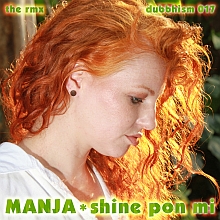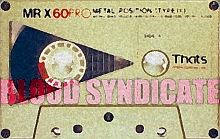
Cosmic objects often arrange themselves in a plane. Our Solar System is relatively flat. Saturn's rings are flat too. Pluto and Damocles may have dramatic orbits, but most rocks prefer to dance around in a tightly choreographed disc-like formation. Aspects like conjunction and opposition contribute to the shaping of disc-like structures. Two kinds of aspects
Every astrologer is familiar with 'regular' aspects, like conjunctions, trines and squares. These are also known as harmonic aspects. Very few astrologers are aware of a second family of aspects, based on the golden ratio. According to astrologer Theodor Landscheidt, harmonic aspects and golden ratio-aspects have a complementary relation, both in a physical and in a metaphysical sense.

From the physical point of view, harmonic aspects produce disturbances in the orbits of planets, moons and asteroids as as result of gravitational forces. The long term arrangement of objects in our solar system, a regular pattern of fixed distances and orbital periods, is the result of a complex self-organizing process. The harmonic aspects are nudging the trajectories of objects toward some kind of equilibrium while golden ratio-aspects function as stabilizing influences that dampen orbital disturbances. Together, the two kinds of aspects help to shape the physical relations between objects.
Maverick scientist and mystic Richard Merrick has studied the relation between harmonic and golden ratio-based forces deeply. In his free book INTERFERENCE he writes: "By spending only a small amount of time looking at the orbit of each planet, a familiar pattern begins to emerge. The average orbital spacing is equal to the golden ratio, suggesting the calm damping rings on a vibrated Chladni plate."
From the symbolic point of view the harmonic aspects point to the well known qualities associated with conjunction, opposition, trine, quintile, septile and so on. The golden ratio-based aspects on the other hand ~ unsurprisingly ~ point to an overall quality of stability. But more importantly they have a quantitative use. The number of golden ratio aspects a planet makes indicates its relative influence or strength in a chart. As a simple example, in a birth chart, 6 or 7 golden ratio aspects to the Sun could indicate a strong sense of identity or big ego, while just 1 or 2 golden aspects to Mars could point to a low energy, non-aggressive person. I've written a few posts on operationalisation of golden ratio aspects in the birth chart.
Prime harmonics
Returning to the harmonic aspects, recent work by Hans-Jörg Walter and David Hamblin has given some new insight into the nature of harmonic aspects: prime harmonics have unique qualities. Quintiles (5), septiles (7) and so on have their own qualitative flavors, while the quality of the sextile (6) for example is really a kind of 'multiplication' of opposition (2) and trine (3) flavors. Higher prime harmonics, even really high ones above ~ say ~ 31 can be very relevant, but in my experience the effect is 'subtle' in most charts.

Music in the bones
We've all heard the story about how Pythagoras discovered the octave ~ which is the sonic equivalent of the astrological conjunction. Even today this hagiographic fairy tale is repeated ad nauseam. In The Myth of Invariance Ernest G. McClain writes: "From what we know at the present time it seems likely that the octave invariance was recognized in India, Sumer, Babylon, Egypt and Palestine well before the variant cycles of sun, moon, and planets ~ "wanderers" all ~ were coordinated with even modest accuracy. Calendrical periods of 30, 60, 360 and 720 units and their multiples belong to the essential arithmatic of a systematic mathematical harmonics. Their source was not astronomy though they found a ready application in early astronomy, which knew them to be unsuitable for its own cycles."
There's also a story about Johannes Kepler being the first astrologer to consider the quintile a valid harmonic aspect. Altho Kepler’s love for quintiles is fact-based, it seems highly unlikely to me that in the musi-mathematical Greece of Pythagoras, Plato, Aristoxenus and Archytas of Tarentum, the quintile wouldn't have been considered. We'll probably never know. At any rate, the number 12 remains a strong force in 'post-Keplerian' astrology.

Dangerous numbers
There's another myth about the hater of beans, cult leader and whole number ratio-fetishist Pythagoras, which is more instructive than the octave story. Hippasus of Metapontum was a follower of Pythagoras. As the story goes, he was murdered by fellow Pythagoreans for revealing a most terrible mathematical secret. The secret involved a dangerous number. It wasn't 666. It was in fact the square root of 2.
The Pythagorean's motto, carved above the entrance of the school, was All Is Number. Pythagoreans believed that the universe was built around a harmony of whole number ratios. But poor old Hippasus found out that there are other kinds of numbers as well. Some of these are literally called 'irrational numbers'. And guess what: the golden ratio, mathematical shorthand for the most stable and beautiful proportion imaginable, also happens to be the most irrational of all irrational numbers. Isn't that someting?

But since orthodox Pythagorean numerology was (and still is) very influential in European culture, the golden ratio, which is also related to the number five (as in quintile) and the pentagram (say hello Venus) was eventually associated with the Christian devil and bad and dangerous things in general. Nowadays we only have to take a casual look at a photo of a spiraling galaxy to grasp how irrational that is.
Music in the stones
The art and science of musical tuning systems revealed to the ancient Egyptians, Sumerians, Babylonians and Indians the clear and 'eternal' relations between the aesthetic and mathematical, between the qualitative and the quantitative. The Music of the Spheres is still one of the most powerful metaphors science has ever come up with. Johannes Kepler believed that our solar system was humming a G major chord but if we examine his calculations using modern data we have to conclude that this idea was a bit too fanciful.
Musician/philosopher Siemen Terpstra has literally 'debunked' the Keplerian version of the Harmony of the Spheres for reasons of tuning precision (see his study The Planetary Monochord). In a paper titled The Law of the Octave and Natural Resonances Terpstra finds that a 53 tone equal temperament (a tuning that divides an octave in 53 equal parts) would fit our solar system much better. Oh well.

On that note, the last word is for the scientific astrologer and mystic Theodor Landscheidt. Here's a quote from a completely forgotten article published in The Astrological Journal in May 1998.
Kepler was the first and last astronomer who looked seriously at ratios of distances of the planets from the Sun. In his "Mysterium cosmographicum" he related the distances of the planets to the Platonic solids. The attitude of modern science towards such an approach was correctly expressed by Nobel prize recipient Weinberg: "Kepler went wrong in supposing that the planets are important. We now understand that the planets and their orbits are the result of a sequence of historical accidents and that there is no reason to expect any relations among the sizes of their orbits that would be mathematically simple and beautiful."
Yet it was Kepler who turned out to be on the right track. When I investigated the ratios of distances from the Sun of pairs of neighbouring planets - Mercury's distance to Venus' distance. Venus' distance to Earth's distance and so on including the mean distance of the planetoids - and calculated the mean of these nine individual ratios to get a quantity that characterizes the solar system as a whole, I was astonished to find that this value 0.62 is close to the Golden number 0.618 when the perihelion distances are taken. The very small difference 0.002 might be looked at as a stability parameter that indicates how far the actual structure of the planetary distances in the solar system deviates from the ideal state defined by the Golden section. [...] Thus we can see how the stabilising function of the Golden section governs the distance structure of the planets and thereby counteracts chaos in the planetary orbits caused by resonance amplification of mutual disturbances. In the end, this balance of potentials of stability and instability preserves the solar system's structure over billions of years. [...] If we step back and scan the bigger picture, it becomes evident that astrological aspects have deep roots that go down to the Platonic realm of mathematical structures encompassing as abstract features as the polarity of rational and irrational numbers. And who would have thought that valid aspects are based on a physical principle that guarantees the stability of dynamical systems including the solar system, our cosmic home.

In the next episode we'll look at scientific approaches to astrology.
















